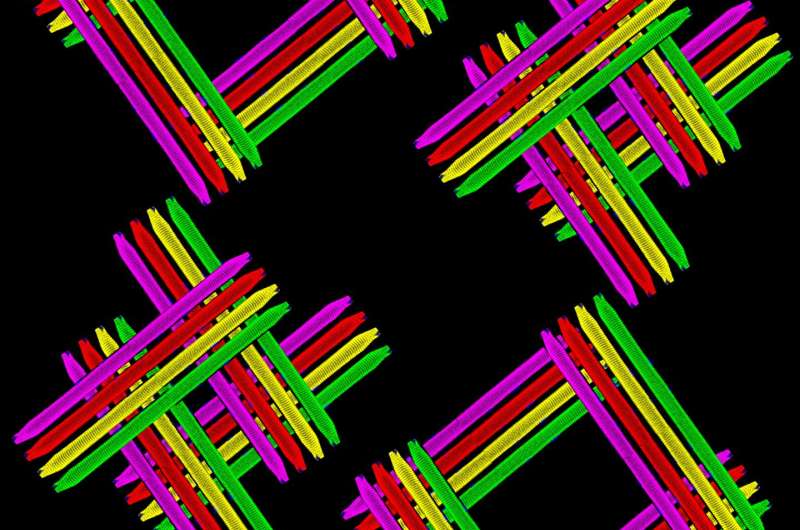Study uncovers roles of proteins essential for mouse muscle function; potential link to myotonic dystrophy

Myotonic dystrophy, the second most common cause of muscular dystrophy, and numerous other muscle disorders affect tens of thousands of individuals in the U.S.. Paving the way toward a better understanding of these conditions, researchers at Baylor College of Medicine and the University of North Carolina at Chapel Hill have discovered essential roles four proteins play in normal adult muscle function. This study opens the door to further explore the involvement of these and other proteins in muscle disorders and to design potential treatments. The work appears in Cell Reports.
"One of the interests of my lab is to better understand the dramatic transition that occurs in skeletal muscles from birth to adulthood," said co-senior author Dr. Thomas A. Cooper, professor of pathology and immunology and of molecular and cellular biology at Baylor. "After birth, most tissues are remodeled to achieve adult form and function. A baby, for instance, is not able to move very much until the muscles mature and are able to work fully."
Cooper and colleagues study how newborn mouse muscles transition into adult muscles, which takes place within the first three weeks after birth. During this transition, some of the newborn muscle proteins are replaced by adult proteins via a process called alternative splicing. Their work showed the importance of these transitions for adult muscle function.
Making the most of a single gene
"Alternative splicing allows cells to make a large number of proteins from a limited number of genes," said Cooper who also is professor of molecular physiology and biophysics at Baylor. "To make proteins, genes in the DNA are transcribed into RNA, which is then translated into protein. Before the RNA is translated into protein, it is processed and the fragments spliced in a certain way. In almost all genes, the RNA is spliced in more than one way. That is alternative splicing; it allows one gene to make many different proteins."
"We are interested in better understanding alternative splicing as a regulatory mechanism of gene expression because it is very prevalent, especially in humans," said co-senior author Dr. Jimena Giudice, who was a postdoctoral fellow in the Cooper lab and currently is an assistant professor of cell biology and physiology at the University of North Carolina at Chapel Hill. "We know many aspects of how this regulation occurs. However, we still don't completely understand the functional consequences of alternative splicing. This was the broad goal of our study. In particular, we discovered alternative splicing affecting proteins that control the transport of molecules inside the cell, a process that always captured my interest."
"In a previous work published in Nature Communications, we found that nearly 700 genes in the mouse heart go through alternative splicing during postnatal development," said Cooper. "We also found that these genes in the heart are also undergoing the same alternative splicing process in skeletal muscle. Importantly, the changes happen in mice and in people, which opens the possibility of modeling human muscle disorders in the mouse."
"In our previous study in the heart, we found that alternative splicing regulates the expression of these proteins and nothing is known about their role in cardiac functions," said Giudice. "This was in fact the starting point of this new study now published in Cell Reports; why newborns and adults need different variants of these proteins."
The researchers think that these genes are potentially linked to myotonic dystrophy, a disease also studied in the Copper lab. The condition affects skeletal muscle, heart and the brain. Finding out what these genes do in healthy mouse muscle will help better understand myotonic dystrophy and related diseases, and open new venues for potential treatments.
Disturbing alternative splicing reveals what genes do
To study what genes that undergo alternative splicing do in normal adult muscle, the researchers disturbed the natural process of alternative splicing of four genes and then determined the effect on functions of the adult mouse skeletal muscle.
The researchers treated adult mouse footpad muscle with morpholinos, a compound that switches the 'adult form' of each of the four proteins back into their 'newborn forms.'
"Three weeks after we treated the muscle with morpholinos, we observed changes in some of the muscle functions," said Cooper. "Dr. George Rodney, an assistant professor in molecular physiology at Baylor, and a graduate student in his lab, James Loehr, who are co-authors on this paper, determined that the muscles treated with morpholinos were less strong than those not treated with the compound."
The researchers also measured calcium release, which is essential for muscle movement. Muscles treated with morpholinos have altered calcium flux.
"We learned that simultaneously altering these four muscle proteins disturbs important muscle functions, such as calcium movement and muscle strength," said Cooper. "This tells us that these four proteins are involved in these muscle functions."
"Our study revealed also that the adult proteins are required to maintain the normal internal architecture of the muscle cells and this can be a reason of the alterations that we observed in muscle strength and calcium release," said Giudice.
More information: Jimena Giudice et al. Alternative Splicing of Four Trafficking Genes Regulates Myofiber Structure and Skeletal Muscle Physiology, Cell Reports (2016). DOI: 10.1016/j.celrep.2016.10.072
Jimena Giudice et al. Alternative splicing regulates vesicular trafficking genes in cardiomyocytes during postnatal heart development, Nature Communications (2014). DOI: 10.1038/ncomms4603


















